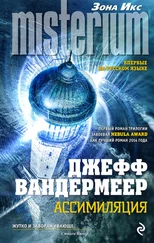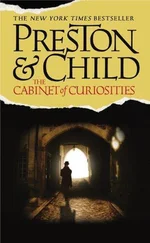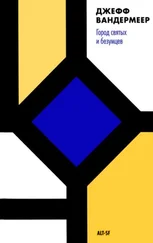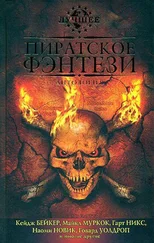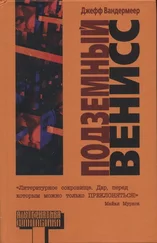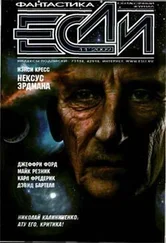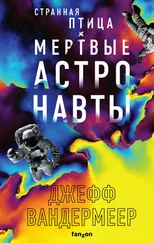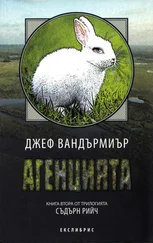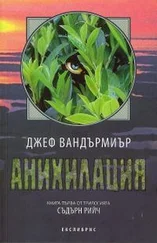Джефф Вандермеер - The Thackery T. Lambshead Cabinet of Curiosities
Здесь есть возможность читать онлайн «Джефф Вандермеер - The Thackery T. Lambshead Cabinet of Curiosities» весь текст электронной книги совершенно бесплатно (целиком полную версию без сокращений). В некоторых случаях можно слушать аудио, скачать через торрент в формате fb2 и присутствует краткое содержание. Жанр: Фэнтези, на английском языке. Описание произведения, (предисловие) а так же отзывы посетителей доступны на портале библиотеки ЛибКат.
- Название:The Thackery T. Lambshead Cabinet of Curiosities
- Автор:
- Жанр:
- Год:неизвестен
- ISBN:нет данных
- Рейтинг книги:5 / 5. Голосов: 1
-
Избранное:Добавить в избранное
- Отзывы:
-
Ваша оценка:
- 100
- 1
- 2
- 3
- 4
- 5
The Thackery T. Lambshead Cabinet of Curiosities: краткое содержание, описание и аннотация
Предлагаем к чтению аннотацию, описание, краткое содержание или предисловие (зависит от того, что написал сам автор книги «The Thackery T. Lambshead Cabinet of Curiosities»). Если вы не нашли необходимую информацию о книге — напишите в комментариях, мы постараемся отыскать её.
The Thackery T. Lambshead Cabinet of Curiosities — читать онлайн бесплатно полную книгу (весь текст) целиком
Ниже представлен текст книги, разбитый по страницам. Система сохранения места последней прочитанной страницы, позволяет с удобством читать онлайн бесплатно книгу «The Thackery T. Lambshead Cabinet of Curiosities», без необходимости каждый раз заново искать на чём Вы остановились. Поставьте закладку, и сможете в любой момент перейти на страницу, на которой закончили чтение.
Интервал:
Закладка:
But, I wondered, an altar to what? I shook my head, told myself I was letting my time in the darkness get the better of me. Of course it was an art object, and I, as a member of the organization, was here to evaluate it.
The painting associated with the installation depicted a teapot, flame spurting from its spout, its body seemingly bloody. It rested on a mound of what might be tentacles or intestines, though they had a machinic aspect as well, and at least one of them terminated in a long-fingered, sharp-clawed hand. There was no signature that I could see, though the technique recalled for me the work of Scott Eagle, or Scott Aigle (as the French call him). The frame was irregular, strangely patched on one side. The longer I looked at it, the more I came to feel that the artwork did not end with the painting proper but extended into this frame. I heard, when I approached the painting, a strange humming, as if I might turn it over to find its reverse swarming with bees. But perhaps this was a quality of the room tone and not of the painting itself.
THERE WAS, BELOWthe painting, what at first appeared to be a poem. A series of words, in any case. I read it, but once I had finished, found that I could not remember what it had said, nor, indeed, make any proper sense of it. I read it again, and a pressure began within my head, which, rightly or wrongly, I ascribed to the poem. I was tempted to read it a third time, this time aloud, but resisted, vaguely afraid of what might happen to me if I did.
And what was that at the bottom of the wall, that strange grouping of blood-red, unidentifiable objects? I crouched and examined them, picked one up and turned it round and about in my hand. It was like a small stone, but soft, and made of a substance I did not recognize.
I followed the line of objects back to the altar, for I had now begun in earnest to think of it as an altar. In the place of wooden spindles or legs, it rested on four simulacra of arms, lacquered. These supported a bottom platter, round, upon which rested sets of false (so I assumed) teeth, arranged in two rows. A top platter was cracquelured over with dried blood, and on this, other platters, other inexplicable disks, and finally, at the top, a glass bell, containing flecks of something like ice. Riding within the ice was an object of uncertain design.
What was the object? I could make out aspects of it, had something of a grasp of its shape and color, but still could not determine what it was. Truth be told, I remained unsure whether it should be considered art or something else, something ritualized and potentially threatening.
Kneel, the base of the altar commanded me. But I did not kneel. Instead I remained standing, hunched and leaning over the altar, my face nearly touching the glass bell. And then, on a whim, I reached up and lifted it away.
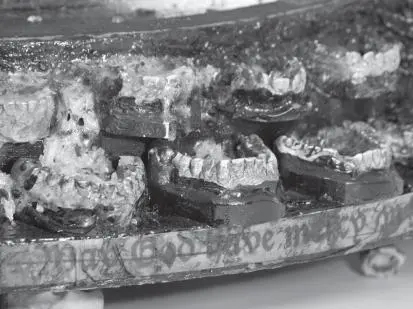
Detail shot of Eagle’s art installation
And here, I am afraid to admit, I suffered another lacuna, another moment of loss. There are things I remember. A roaring sound, but distant, as if miles away, as if there were still time to find shelter from whatever was coming. A horrible stench, like the air itself had been scorched. Brief flashes of motion and light, coming initially from the painting but quickly spreading all around me. And then nothing.
I returned to consciousness in the bushes next to one wall of the estate, unsure of how I had arrived there. One side of my body was sore, covered with scratch marks and scabs. My earlobe was stiff with dried blood, though I found no sign of any injury or wound. My tongue was scraped raw and sat heavy in my mouth.
When I stumbled back into the house, I discovered several days had passed and I had been replaced in my project of evaluating the collection.
When asked to justify my absence, first by my replacement and then by my betters in the organization, I recounted all that had happened. And yet, no matter how I searched, no matter where I looked in the galleries, I could find no hidden entry or door. I did my best to draw what I had seen, what I had perceived, but my interlocutors remained incredulous. There was, they told me, no secret room, no private altar of forearms and blood and teeth; I had dreamed it; I had imagined it.
When they told me this enough times, I stopped trying to convince them. Yes, I conceded, it was not real. I had merely fallen and hit my head. Nothing happened. I saw nothing.
BUT, OF COURSE, I had seen what I had seen, and as time went on, I found the memory of what I had seen working away at me. I saw it there before me: a painting of tubes and tentacles, an unknown object on a strange altar, balanced atop teeth and arms. And sometimes, in my thoughts, the teeth begin to chatter and the arms flex and stretch, the fingers moving, calling me, beckoning me. And though I had originally been repulsed, I now found myself more and more attracted, more and more drawn in.
Tonight I will break into the estate and then, with a sledgehammer, strike wall after wall until I find the vanished door. Once found, I will open it and again follow the passage slowly down until I find myself standing before the altar. This time, I will heed its advice and kneel. It will, I am certain, reward me. But how, and with what, and whether for better or worse, I do not know.
I am writing this record to stand in my place in case I do not return.
2000: Dr. Lambshead’s Dark Room
By S. J. Chambers
About ten years ago, Dr. Lambshead published an article in the Psychomesmeric Quarterly about hypnotic techniques inherited from his grandfather, a great confidant of Monsieur Mesmer. Among Lambshead’s mesmeric family legacy was the Valdemar Method, which enabled the doctor, so he claimed, “to extract from even the most cavernous subconscious those diseases that afflicted the soul, as demonstrated in the mesmeric stories of Edgar Allan Poe.”
As I am a Poe scholar, the doctor’s claims intrigued me and I wrote him requesting a demonstration. I knew the good doctor could not resist a challenge, so to further intrigue him, I mentioned that I felt riddled with a disease of influence that was affecting my work and love life, and offered myself up as the proverbial guinea pig. Within a fortnight, I received an invitation to his house, “the only place,” he wrote, “where the Valdemar Method could be manifested.”
Surprisingly, Dr. Lambshead appeared to have no maid or butler, and was already waiting at the door when I arrived. An ancient but spry man in a tailored silk bathrobe, he was headed down the hallway before I could put my bags down and greet him.
“To the matter at hand,” he said. “Don’t tell me a thing. That is for the Dark Room to show.”
He waved me inside and led me to the back of the house, where he pulled aside a faded Turkish rug to reveal a trap door that fell open into a dark and dusty staircase. He descended into that darkness, and I followed him down several flights, feeling my way around the rocky walls, until he suddenly halted and clapped his hands repeatedly. When he stopped clapping, several floating orbs illuminated the basement.
“Will-o’-the-wisps,” Lambshead said, “from the Iberian Coast. I caught them with one of Nabokov’s butterfly nets.” I looked at the floating lights, which graduated from green to purple, blue to red, like childhood’s LED sparklers. I held out my hand and one alighted on my finger—its touch cool as the Mediterranean.
“How . . . how do they . . .”
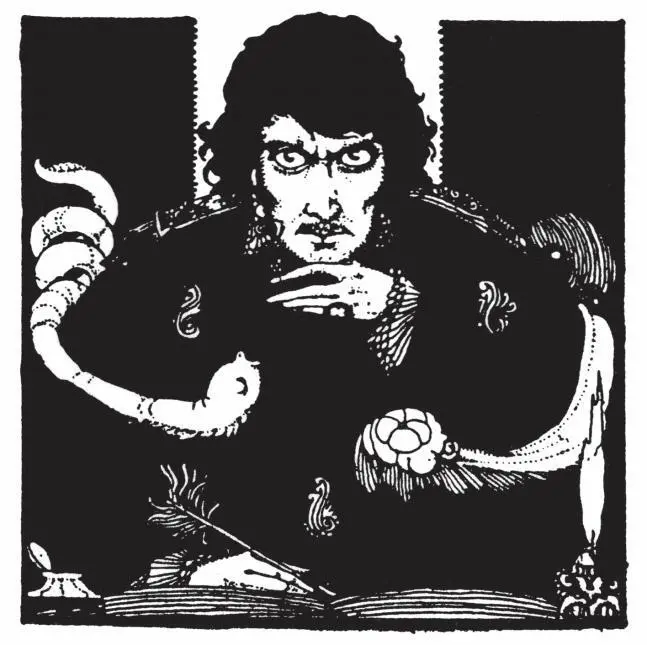
Интервал:
Закладка:
Похожие книги на «The Thackery T. Lambshead Cabinet of Curiosities»
Представляем Вашему вниманию похожие книги на «The Thackery T. Lambshead Cabinet of Curiosities» списком для выбора. Мы отобрали схожую по названию и смыслу литературу в надежде предоставить читателям больше вариантов отыскать новые, интересные, ещё непрочитанные произведения.
Обсуждение, отзывы о книге «The Thackery T. Lambshead Cabinet of Curiosities» и просто собственные мнения читателей. Оставьте ваши комментарии, напишите, что Вы думаете о произведении, его смысле или главных героях. Укажите что конкретно понравилось, а что нет, и почему Вы так считаете.

